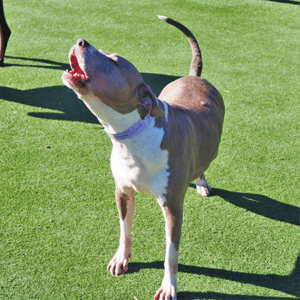 Most dog owners will agree that their dogs understand familiar words. Say, “Sit,” and your dog will collapse upon their haunches. Say, “Let’s go for a walk,” and they’ll run to the door and grab their leash. Say, “It’s time to eat,” and they’ll head for the food bowl. It appears that they understand the words sit, walk, and eat, leading us to believe that dogs learn to associate specific words with specific actions or objects.
Most dog owners will agree that their dogs understand familiar words. Say, “Sit,” and your dog will collapse upon their haunches. Say, “Let’s go for a walk,” and they’ll run to the door and grab their leash. Say, “It’s time to eat,” and they’ll head for the food bowl. It appears that they understand the words sit, walk, and eat, leading us to believe that dogs learn to associate specific words with specific actions or objects.
Our dogs may get what we say, but what we say is only part of the equation. How we say it impacts how much a dog comprehends. Dogs interpret human spoken language as well as human body language in their effort to understand us. Dogs read more into our tone and body language than our actual words. They focus on us and observe our physical clues to determine what we want them to do or not do. They watch our facial expressions, posture, and body movements. They listen to the tone of our voice. They combine all these observations to determine our meaning.
Your dog can learn the meaning of many words and can grasp that meaning even better when we say those words in an appropriate tone. In a study done at the University of York in the UK, researchers looked into how dogs responded to human speech. They wanted to know if dogs could tell the difference between human and dog-related language and whether they benefit from one over the other. They learned that if you really want to engage your dog’s mind, regularly talking to them with words they understand is a good way to do it. When we do this, we can speak to our dogs and feel gratified that they “get” us because we understand them and their needs.

